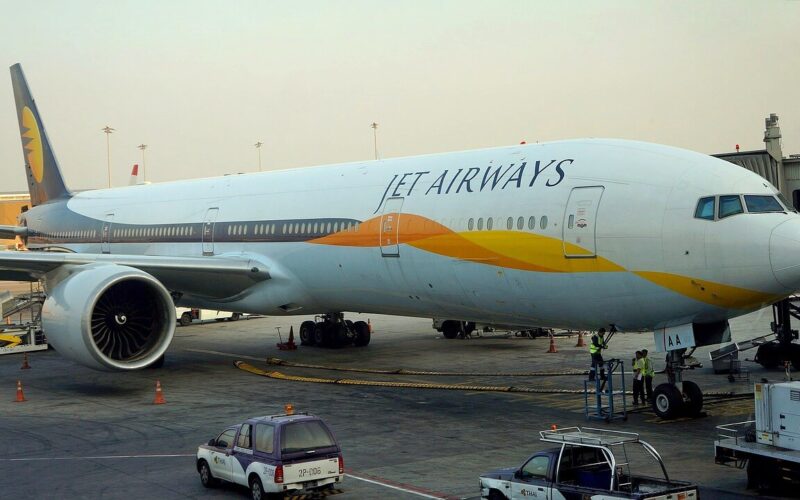Just over a week after debt-ridden Jet Airways was bailed out by state-run banks, the airline sees its planes being grounded yet again. It is known that over two thirds of its fleet is now removed from operations, but local media reports indicate that as little as 15 planes are actually still flying.
Jet Airways had to ground an additional 15 aircraft due to missed lease payments, the carrier admitted in exchange filling on April 2, 2019. Of the airline’s fleet, that once stood at 119 aircraft, there are between 26-28 aircraft remaining in service, Reuters estimates.
Planespotters.net data indicates that of Jet Airways fleet of 113 aircraft, 82 aircraft are currently stored. Of the remaining 31 aircraft, 26 planes were still flying as recently as April 2 and 3, according to flightradar24 data.
However, Indian Civil Aviation Secretary says the carrier has less than 15 flying aircraft and therefore is at risk of losing its right to operate international flights. “Currently, it is operating less than 15 aircraft. The airline’s eligibility to fly internationally needs to be examined,” the secretary was quoted as saying by ANI on April 3, 2019. India’s law requires carriers to have a fleet of at least 20 aircraft and operate 120 daily domestic flights to be eligible for international routes.
In recent weeks, Jet Airways already had trouble with the country’s authorities, when the Directorate General of Civil Aviation (DGCA) only partly approved the carrier’s summer schedule, not further than April 25, 2019.
Meanwhile, there is another deadline forthcoming. After being threatened with pilots strike, Jet Airways agreed to pay out December salaries to pilots and aircraft maintenance engineers, claiming it is still unable to pay more recent overdue wages. The National Aviators Guild, the pilots’ union, decided to postpone the strike, initially planned on April 1, to April 15.
Light at the end of the tunnel?
Jet Airways has been on the verge of bankruptcy for months now and its cash deprivation with attributes such as unpaid salaries or plane groundings have become somewhat of routine news. But on March 25, 2019, the airline got at least a temporary respite, as its lenders agreed to a bailout.
The airline, however, came to a breakthrough on March 25, 2019. On that day, the airline announced finding a solution, which is to “enable the airline to restore normalcy to its level of operations”. As per this rescue plan, a consortium of domestic lenders led by State Bank of India became the majority shareholders and have temporarily taken control of the airline.
As lender’s debt was converted into equity shares, Etihad Airways’ stake in the airline shrank from 24% to 12%. Together with shareholding changes, Jet Airways board of directors was also shuffled around with three people stepping down from their position at the company.
The rescue plan also saw Jet Airways founder Naresh Goyal resign from the company’s chairman position. He, along with his wife Anita Goyal and one of two Etihad’s nominees, Kevin Knight, were likewise expected to leave the airline’s board. Two lenders’ nominees were to be inducted to the board.
The state-run banks also agreed to make an immediate interim funds infusion of approximately $218 million. “The airline will leverage the funding to partly clear pending dues towards lessors, vendors, creditors and employees in a phased manner,” Jet Airways’ statement on the day explained. “The move will see Jet Airways re-deploy several of its grounded aircraft back into its network, helping renew many of the routes it had temporarily suspended, which will help restore normalcy of operations, aiding the airline’s long term transformation to continue expansion and to regain its position as a global player”

